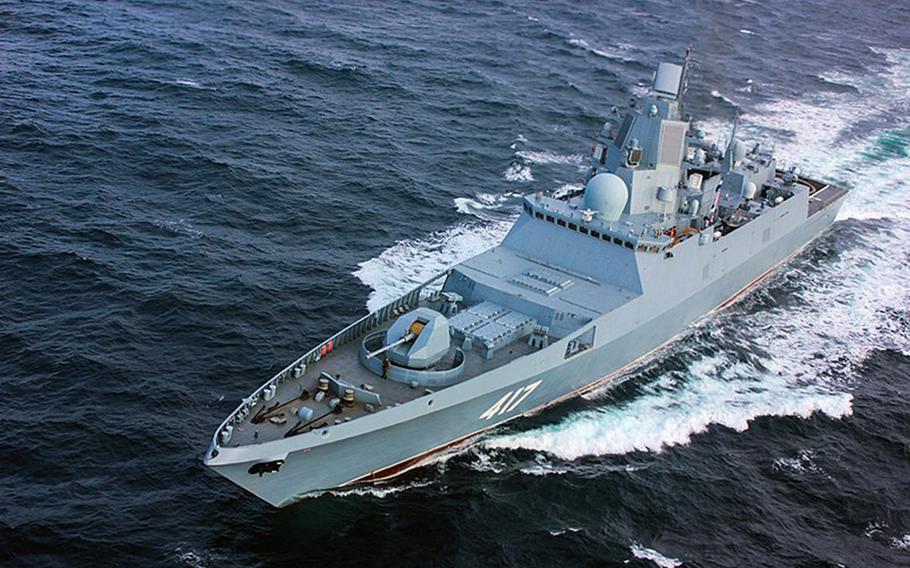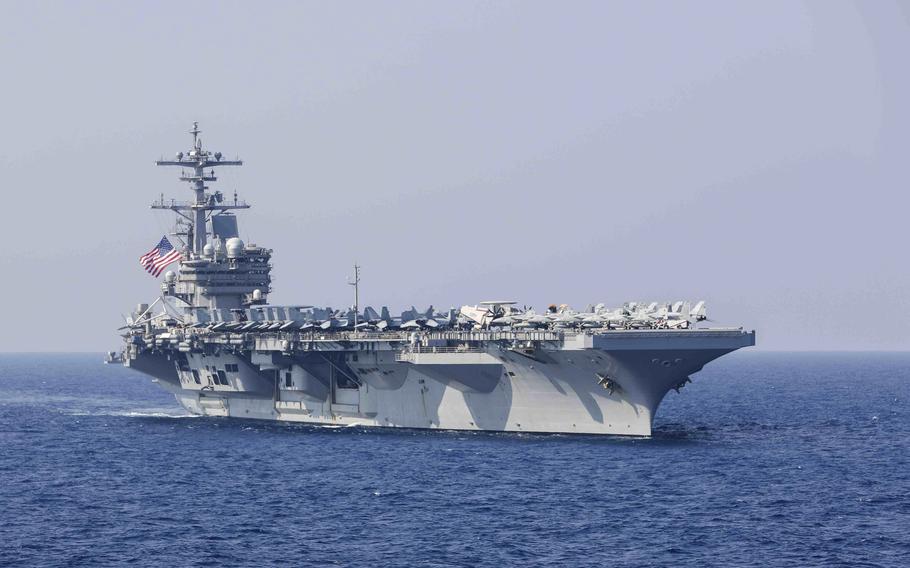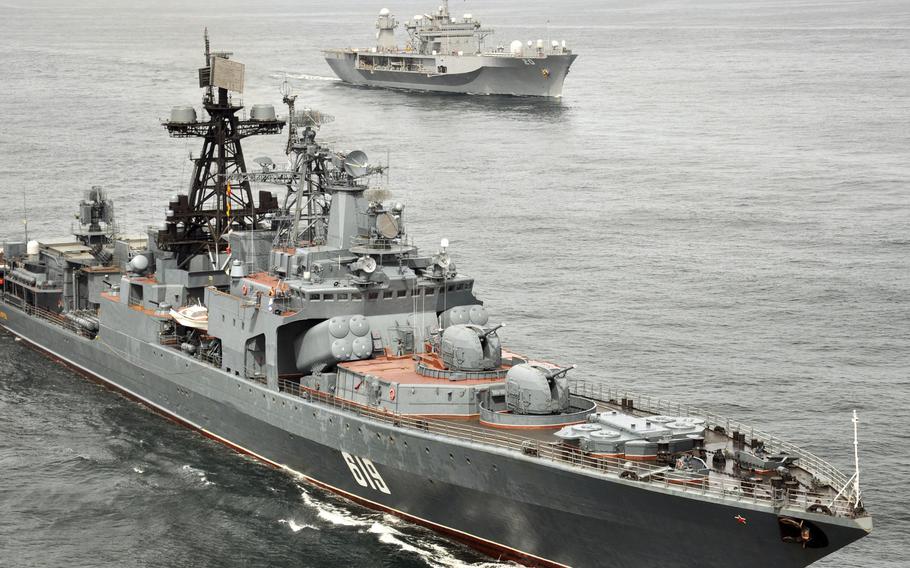
The Russian frigate Admiral Gorshkov, armed with hypersonic missiles, is expected to head to the Mediterranean Sea, following training with the South African and Chinese navies. Adm. Enrico Credendino, the Italian navy chief of staff, recently told the country's parliament that a buildup of Russian ships in the Mediterranean is increasing the risk of an incident. (Russian Ministry of Defense)
NAPLES, Italy — Russian navy ships are transiting the Mediterranean Sea in numbers not seen even in the Cold War, increasing the risk of an incident with NATO forces in the normally stable region, Italy’s top naval officer said this week.
That increase coincides with an “aggressive attitude” shown by Russian naval forces similar to their posture in the Baltic Sea, Adm. Enrico Credendino said Thursday, according to a report by the Italian news agency Ansa.
And the impending arrival of the Russian frigate Admiral Gorshkov, armed with hypersonic missiles, into the Mediterranean after completion of exercises in Africa could further aggravate an already “complex and turbulent” situation, Credendino said in the Ansa report.
The active part of those exercises, which include China and South Africa, is scheduled to end Monday, the Russian state news agency RIA reported Wednesday.
"The risk of an incident is possible, and when there is an incident of this nature, you never know where you might end up,” Credendino said, according to the Ansa report.
However, Credendino also said Russian naval activity in the region, an effect of the war in Ukraine, was not a direct threat to national territory, Ansa reported.
And allies have repeatedly upheld the right of all nations to transit peacefully through international waters.
U.S. Naval Forces Europe-Africa/U.S. 6th Fleet did not answer Stars and Stripes’ questions Friday about Russian naval presence in the Mediterranean.

The aircraft carrier USS George H.W. Bush sails the Mediterranean Sea in January 2023. Russian naval presence in the sea has increased to levels greater than those normally seen during the Cold War, Adm. Enrico Credendino, the Italian navy chief of staff, recently told the country's parliament. (Kenneth Blair/U.S. Navy)
U.S. officials previously have said that interactions with the Russian navy occur with some frequency and are typically safe. But in November 2022, a Russian ship’s encounter in the Mediterranean with the George H.W. Bush Carrier Strike Group was deemed unprofessional by a U.S. admiral, who didn’t go into details.
The same month, two Russian fighter jets approached NATO ships in the Baltic Sea at an altitude of about 300 feet and a distance of 80 yards, ignoring query communications, according to a NATO statement.
Open source intelligence analysts recently posted on Twitter and other social media sites that Russia’s naval fleet in the Mediterranean appears to be increasingly active. Previous reports indicated that much of the fleet appeared to regularly be in port in Tartus, Syria, over the past year.
“The mass deployment was most likely done in response to the presence of the U.S. Navy carrier action group centered on the aircraft carrier USS George H.(W.) Bush,” former Belgian navy officer Frederik Van Lokeren posted Feb. 18 to his blog.
Those Russian forces include at least one Kilo-class submarine and eight other warships, such as frigates, corvettes and tankers, according to Van Lokeren.
Credendino also noted increased Russian naval activity in the Black Sea, an observation supported by open source analysts in recent weeks.
He described the Mediterranean as crowded, with four allied groups — Italian, American, French and Spanish — operating in the area.
USNI reported Tuesday that the George H.W. Bush strike group remained in the eastern Mediterranean after being ordered there in response to the Feb. 6 earthquake in Turkey.

The Russian navy anti-submarine ship Severomorsk, foreground, sails with the USS Mount Whitney during a joint exercise in 2010. Relations between the Russian fleet and NATO allies deteriorated following Russia's forced annexation of Ukraine's Crimean Peninsula in 2014. ( Sylvia Nealy/U.S. Navy)
The group includes destroyers USS Nitze, USS Delbert D. Black, USS Farragut and USS Truxtun in addition to the cruiser USS Leyte Gulf and Carrier Air Wing 7.
Analysts also have likened the NATO naval presence in the Mediterranean, which includes the Ionian and Aegean seas, to that of the Cold War era.
That presence was made more notable in December 2021, when Defense Secretary Lloyd Austin ordered the USS Harry S. Truman to remain in the Mediterranean amid Russia’s military buildup and subsequent invasion of Ukraine.
The Truman Carrier Strike Group stayed there until August 2022, when the Bush came on patrol.